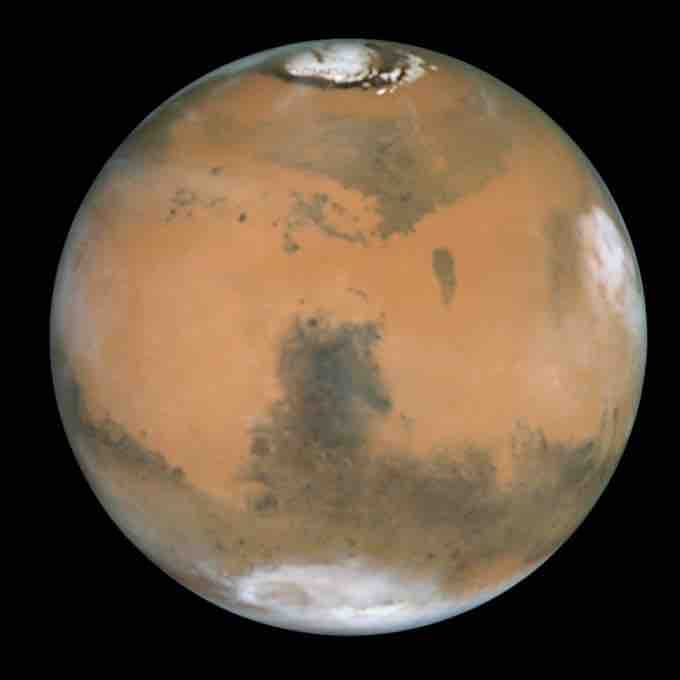The Planet Mars
Mars is the fourth planet from the Sun and the second smallest planet in the Solar System. The planet can be seen from Earth with the naked eye . Mars has a thin atmosphere and its surface is very similar to the Earth's moon (craters). Mars has volcanoes, valleys, deserts, and polar ice caps similar to Earth. Additionally, Mars rotates similarly to Earth and has a tilt that produces seasons.

Mars
This is the true-color view of Mars as seen through NASA's Hubble Space Telescope in 1999.
Mars was first observed at close proximity in 1965 by the Mariner 4. This observation began decades of study and speculations about the structure of the surface of Mars. Scientists hypothesize that its surface is covered by liquid water. Scientists are still collecting and analyzing data concerning its surface. The planet is currently host to five functioning spacecraft: three in orbit—the Mars Odyssey, Mars Express, and Mars Reconnaissance Orbiter; and two on the surface—Mars Exploration Rover Opportunity and the Mars Science Laboratory Curiosity.
Biosphere
A biosphere is typically defined as the part of the Earth and its atmosphere capable of supporting life. A biosphere can also be thought of as an global ecological system that incorporates all living beings and their relationships with the lithosphere, hydrosphere, and atmosphere. Currently, a great deal of research is going into developing hypotheses on a Martian biosphere. This research overlaps greatly with Martian terraforming, which explores how humans might manipulate the Martian environment to make it stable for maintaining life. As mentioned above, scientists are still collecting a great deal of data on the structure and functioning of Mars. This is a burgeoning field of research.